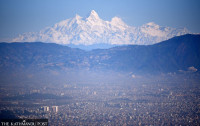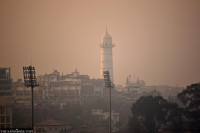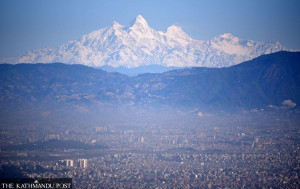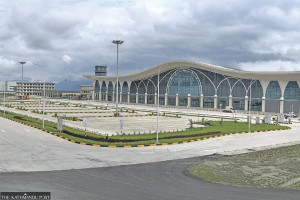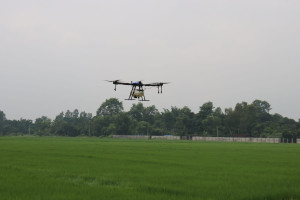Climate & Environment
Rain brings relief to Kathmandu Valley from severe air pollution
Most wildfires have died down. Several districts see heavy rainfall. More rain forecast until Sunday.
Post Report
Most places across Nepal witnessed rainfall on Wednesday night and some places on Thursday, thanks to the low-pressure system over the Bay of Bengal that caused rainfall, bringing respite from dangerous levels of air pollution.
The widespread rainfall has also snuffed out most of the wildfires that had been raging across the country for the past several weeks.
The Meteorological Forecasting Division of the Department of Hydrology and Meteorology said that moisture coming from the Arabian Sea also contributed to the weather system causing rainfall.
“Compared to previous days, both pollution levels and wildfire incidents have decreased,” said Hari Prasad Dahal, a meteorologist at the division. “Most places witnessed rainfall on Wednesday night and some on Thursday.”
Nepal has experienced the worst air pollution since the last week of March, which meteorologists say is unprecedented for the country.
Meteorologists and environmentalists said that the country used to be shrouded by haze and smog for around a week in the past. This year though, murky conditions have persisted for more than two weeks, with visibility dropping to less than eight kilometres.
Wildfires in hundreds of locations, including the Chure forests, along with stubble burning, burning of other waste materials, house fires, and brick kiln operations, are blamed for the deteriorating air quality in the Valley.
Hundreds of wildfires raged across the country for the past several weeks. The Chitwan National Park, Parsa National Park, Shuklaphanta National Park, Bardiya National Park and others witnessed dozens of wildfire incidents.
However, the Forest Fire Identification and Monitoring System used by the Ministry of Forest and Environment shows only nine incidents of wildfire on Wednesday and Thursday. Rainfall in most of the places is credited with dousing the hundreds of fires that had been raging for several weeks.
Kathmandu Valley had been labelled the most polluted city in the world for around two weeks, with PM2.5 levels soaring to hazardous levels.
Despite rainfall in many places, the Capital city again ranked third among the most polluted cities in the world on Thursday afternoon, with PM 2.5 levels recorded at 154 micrograms per cubic metre (μg/m3), an unhealthy level.
PM2.5 refers to particulate matter (solid or liquid droplets) in the air less than 2.5 micrometers in diameter. It is among the most dangerous pollutants that can get past the nose and throat to penetrate the lungs and even the bloodstream. PM2.5 particles are small and are also likely to stay suspended in the air for a long time, increasing the chances of people inhaling them.
As per the US Environmental Protection Agency’s air quality index, an air quality reading of 151–200 is considered unhealthy; everyone may experience problems, with sensitive groups feeling more severe effects.
A recent analysis by the International Centre for Integrated Mountain Development (ICIMOD) shows that high pollution has been the norm in 2025, with inhabitants suffering 75/90 days of unhealthy air in the past three months.
Met officials expect the air quality to improve, as chances of light to moderate rainfall are high until Sunday.
“The rainfall will continue until Sunday, though with reduced intensity,” said Dahal. “Pre-monsoon rainfall is a normal phenomenon, which helps lessen air pollution, wildfire incidents, and rising temperatures, and helps farmers in cultivation. Isolated rainfall is likely in the coming days, as local systems also cause rainfall during the pre-monsoon season.”
According to data provided by the division, Ilam witnessed very heavy rainfall—110 mm in the past 24 hours, followed by Sarlahi 89.4 mm, Parsa 73 mm, Udayapur 71.8 mm, Saptari 66.6 mm, Rautahat 65.2 mm, and Kalikot 53.2 mm.
Commuters and travellers were stranded for hours due to obstruction of highways by the landslides triggered by heavy rainfall. Some districts also saw flooding. Windstorms caused widespread power outages in the districts of Karnali province, including Surkhet, Salyan, and Jajarkot, among others.
Strong winds, coupled with lightning and rain, brought down trees and electricity poles, damaging transmission lines.




 16.12°C Kathmandu
16.12°C Kathmandu